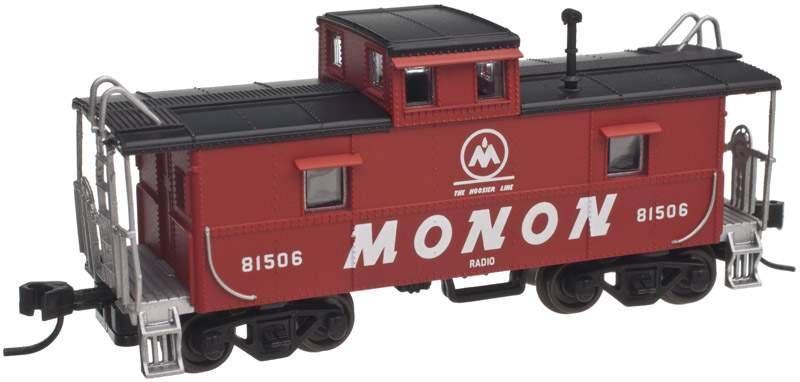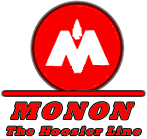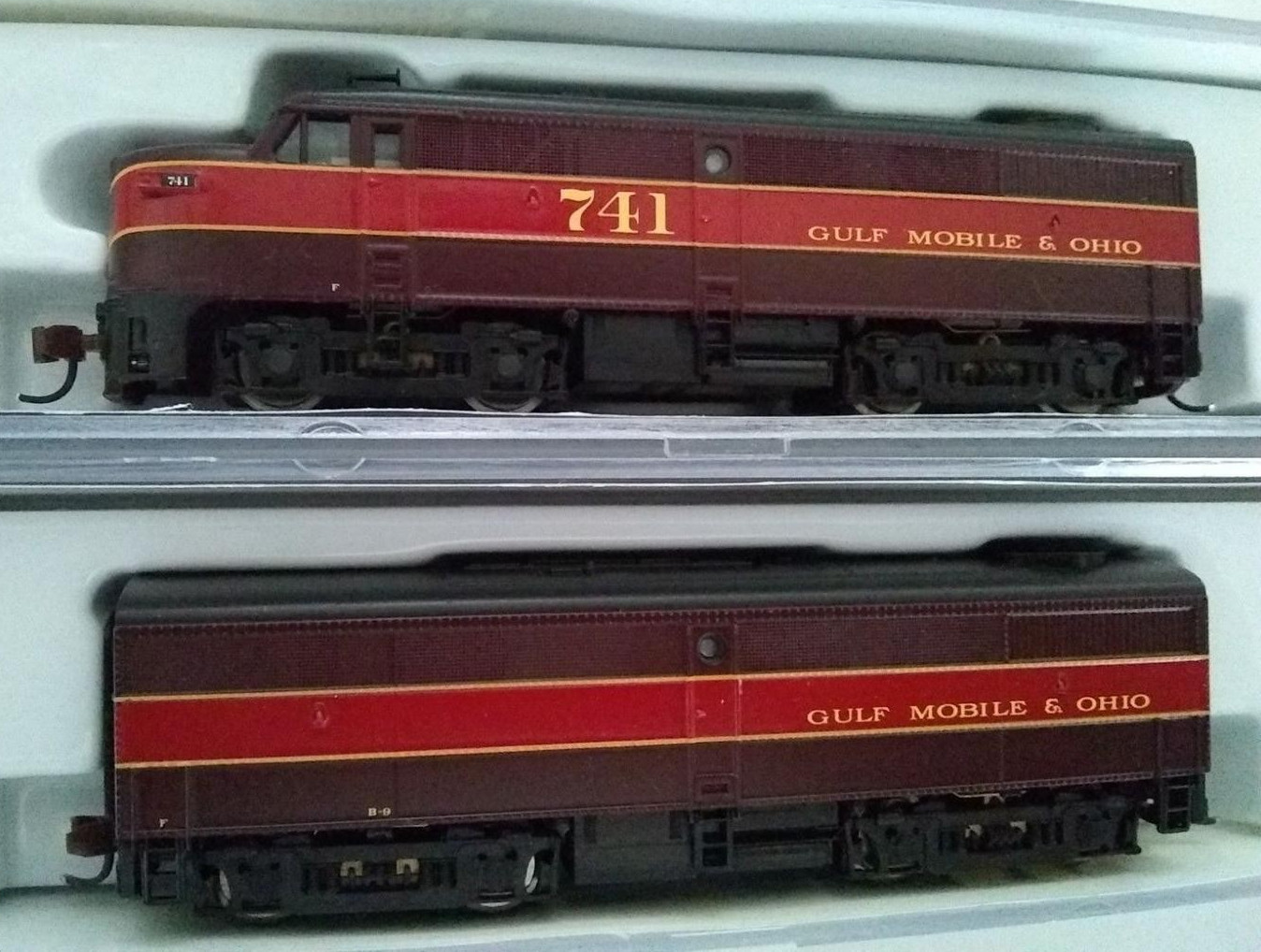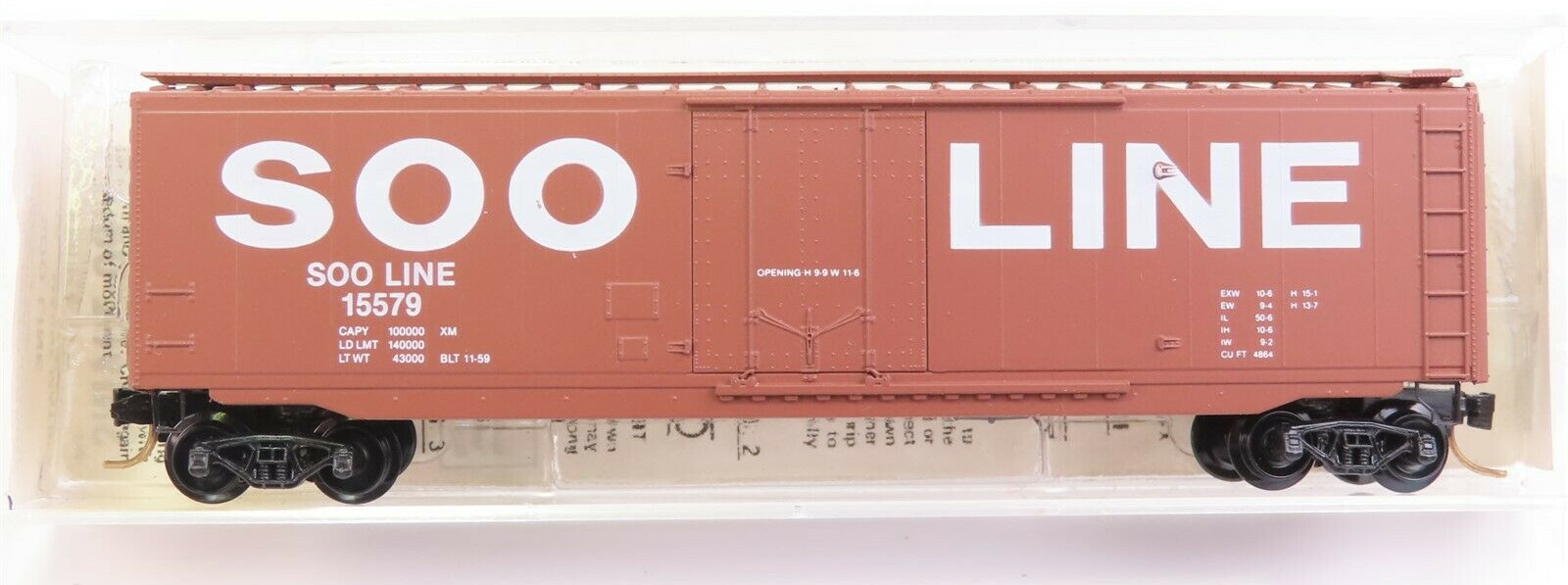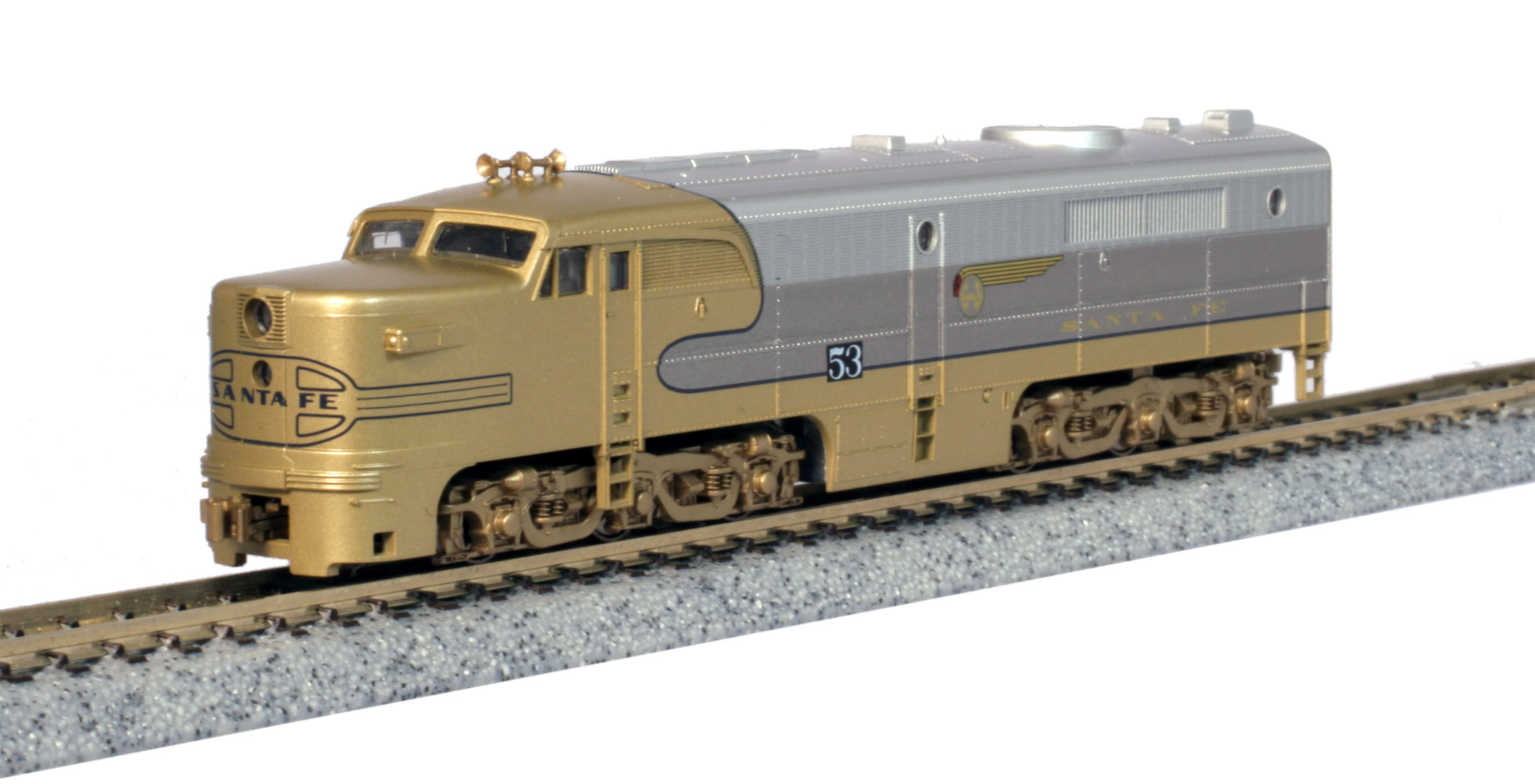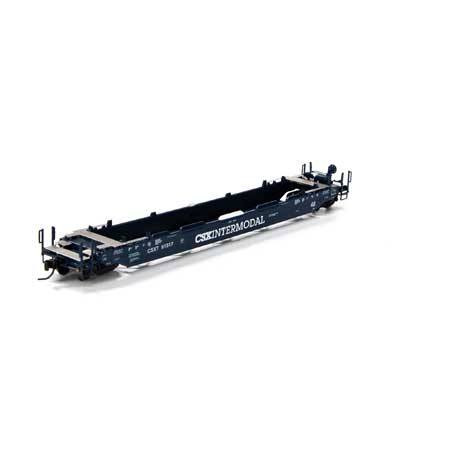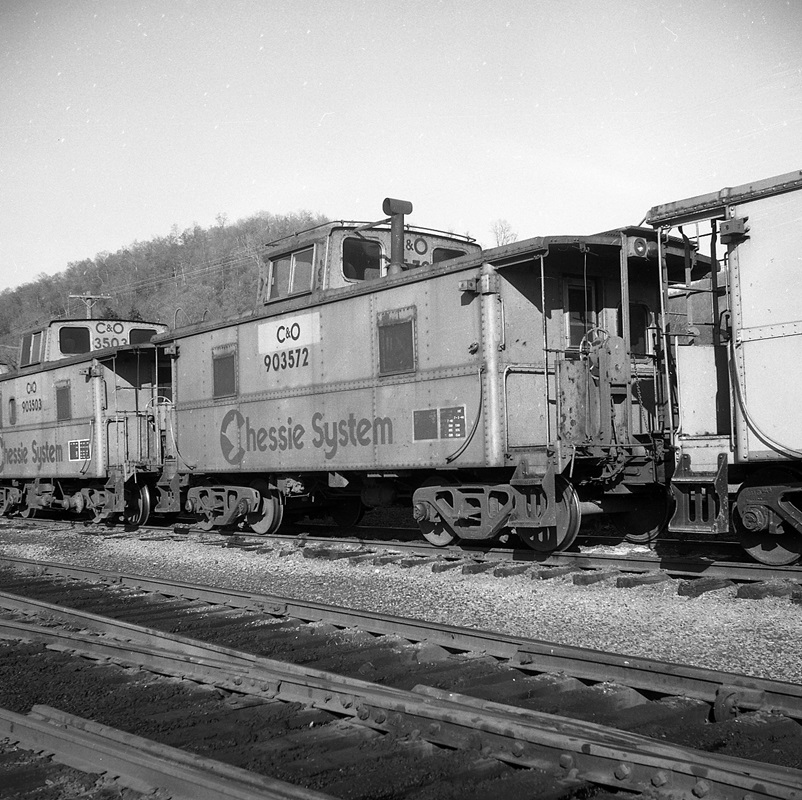Model Information: Atlas introduced this model in 2008. From the get-go, this has been a Trainman model with slightly less detail and a lower price point than Atlas' Master line products. The "39" Series caboose carries a cupola almost in the exact middle of the body. It does NOT have a raised roofwalk like the NE-6. Instead the rooflwalks are molded into the roof. It does have ladders which "loop over" the roof. It carries two large windows on each side as well as two separated smaller windows on each side of the cupola. The smokestack is taller than the one on the NE-6. This model has always featured body-mounted Accumate couplers. This model falls somewhere between 2nd and 3rd generation rolling stock models. It lacks metal wheels and elegant use of detail parts (no etched metal parts here), but the wheels can be user-upgraded and one could argue that the end platform detail and ladders are sufficient to qualify for 'detail parts' - enough to make this a 3gen model.
Prototype History: The first all-steel cabooses built for the Chesapeake & Ohio Railroad were produced in 1937 by the Magor Car Corporation in Clifton, N.J. Magor, along with St. Louis Car Company and ACF, ultimately built a total of 350 cabooses for the C&O using a similar design. The last were produced in 1949. Through subsequent rebuilding and modernization, many remained in service through the end of regular caboose usage in the 1980s. Cabooses of a similar design were also built for Pere Marquette, Missouri Pacific and Chicago & Eastern Illinois.
Road Name History: The Monon Railroad (reporting mark MON), also known as the Chicago, Indianapolis, and Louisville Railway (reporting mark CIL) from 1897 to 1956, was an American railroad that operated almost entirely within the state of Indiana. The Monon was merged into the Louisville and Nashville Railroad in 1971, and much of the former Monon right of way is owned today by CSX Transportation. In 1970 it operated 540 miles (870 km) of road on 792 miles (1,275 km) of track; that year it reported 1320 million ton-miles of revenue freight and zero passenger-miles. (It showed zero miles of double track, the longest such Class I railroad in the country.)
Read more on Wikipedia.
Read more on Wikipedia.
Brand/Importer Information: In 1924 Stephan Schaffan, Sr. founded the Atlas Tool Company in Newark, New Jersey. In 1933 his son, Stephan Schaffan, Jr., came to work for his father at the age of sixteen. Steve Jr. built model airplanes as a hobby and frequented a local hobby shop. Being an enterprising young man, he would often ask the owner if there was anything he could do to earn some extra spending money. Tired of listening to his requests, the hobby-store owner threw some model railroad track parts his way and said, "Here, see if you can improve on this".
In those days, railroad modelers had to assemble and build everything from scratch. Steve Jr. created a "switch kit" which sold so well, that the entire family worked on them in the basement at night, while doing business as usual in the machine shop during the day.
Subsequently, Steve Jr. engineered the stapling of rail to fiber track, along with inventing the first practical rail joiner and pre-assembled turnouts and flexible track. All of these products, and more, helped to popularize model railroading and assisted in the creation of a mass-market hobby. The budding entrepreneur quickly outgrew the limitations of a basement and small garage operation. Realizing they could actually make a living selling track and related products, Steve and his father had the first factory built in Hillside, New Jersey at 413 Florence Avenue in 1947. On September 30, 1949, the Atlas Tool Company was officially incorporated as a New Jersey company.
In 1985, Steve was honored posthumously for his inventions by the Model Railroad Industry Association and was inducted into the Model Railroad Industry Hall of Fame in Baltimore, Maryland. In addition, Steve was nominated and entered into the National Model Railroad Association Pioneers of Model Railroading in 1995.
In the early 1990s, the Atlas Tool Company changed its name to Atlas Model Railroad Company, Inc.
In those days, railroad modelers had to assemble and build everything from scratch. Steve Jr. created a "switch kit" which sold so well, that the entire family worked on them in the basement at night, while doing business as usual in the machine shop during the day.
Subsequently, Steve Jr. engineered the stapling of rail to fiber track, along with inventing the first practical rail joiner and pre-assembled turnouts and flexible track. All of these products, and more, helped to popularize model railroading and assisted in the creation of a mass-market hobby. The budding entrepreneur quickly outgrew the limitations of a basement and small garage operation. Realizing they could actually make a living selling track and related products, Steve and his father had the first factory built in Hillside, New Jersey at 413 Florence Avenue in 1947. On September 30, 1949, the Atlas Tool Company was officially incorporated as a New Jersey company.
In 1985, Steve was honored posthumously for his inventions by the Model Railroad Industry Association and was inducted into the Model Railroad Industry Hall of Fame in Baltimore, Maryland. In addition, Steve was nominated and entered into the National Model Railroad Association Pioneers of Model Railroading in 1995.
In the early 1990s, the Atlas Tool Company changed its name to Atlas Model Railroad Company, Inc.
Item created by: gdm on 2017-10-10 06:49:57
If you see errors or missing data in this entry, please feel free to log in and edit it. Anyone with a Gmail account can log in instantly.
If you see errors or missing data in this entry, please feel free to log in and edit it. Anyone with a Gmail account can log in instantly.


